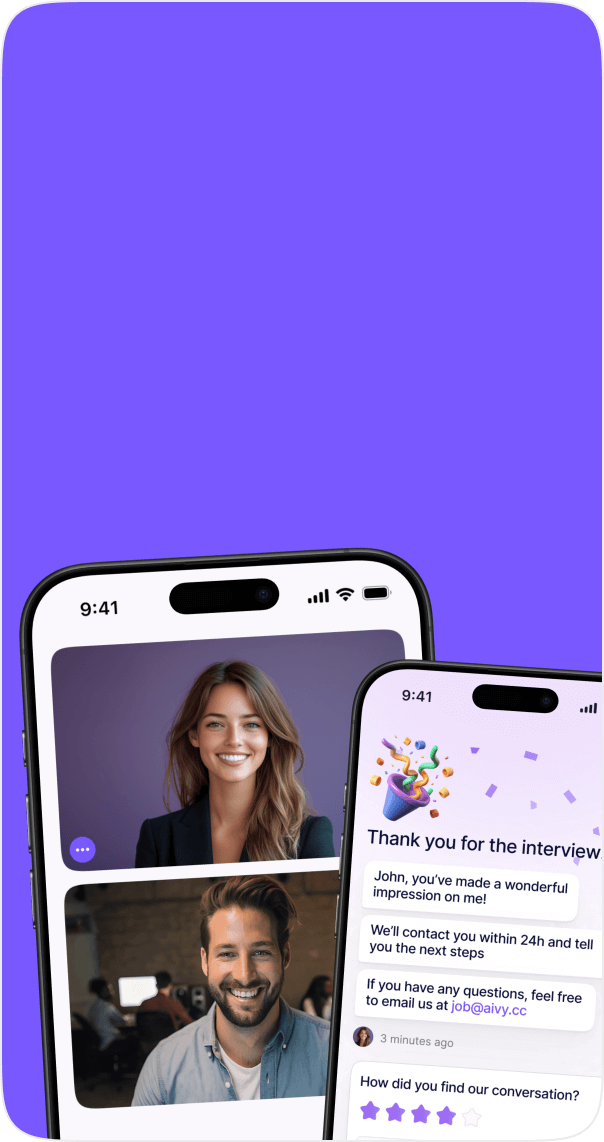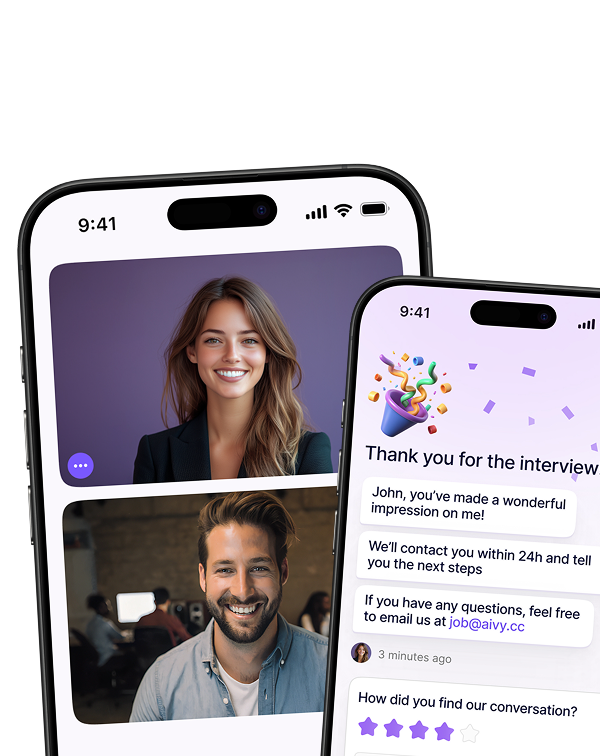Mar 21, 2025
On irrelevant resumes that don't meet your hiring needs, wasting time better spent on the right candidates.
The numbers don't lie
The new LinkedIn Work Change report reveals that while applications are flooding in—with nearly 40% of job seekers applying to more positions than ever before—employers are drowning in useless submissions.
Fortune's analysis drives the point home: "Nearly two-thirds (64%) of HR professionals say it's actually become harder to find qualified talent in the last year."
Why? Because your application process is fundamentally broken.
Fortune's analysis drives the point home: "Nearly two-thirds (64%) of HR professionals say it's actually become harder to find qualified talent in the last year."
Why? Because your application process is fundamentally broken.
Your recruitment process is leaking money
Let's do some basic math your CFO would appreciate:
For a mid-sized company with five recruiters, that's $144,000 annually spent on reading resumes that should never have made it past the first filter. This doesn't even account for opportunity cost—the qualified candidates your competitors are hiring while your team wastes time on obvious rejects.
As Aneesh Raman, Chief Economic Opportunity Officer at LinkedIn, bluntly puts it: "We've got a skills mismatch that's playing out in the labor market, and it is only going to be more true over time, because the labor market was built to look at jobs as titles, not tasks."
- Average recruiter salary: $60,000 ($30/hour)
- Hours spent reviewing unqualified resumes: 20+ weekly
- Weekly cost per recruiter: $600+
- Monthly waste: $2,400+
- Annual waste per recruiter: $28,800+
For a mid-sized company with five recruiters, that's $144,000 annually spent on reading resumes that should never have made it past the first filter. This doesn't even account for opportunity cost—the qualified candidates your competitors are hiring while your team wastes time on obvious rejects.
As Aneesh Raman, Chief Economic Opportunity Officer at LinkedIn, bluntly puts it: "We've got a skills mismatch that's playing out in the labor market, and it is only going to be more true over time, because the labor market was built to look at jobs as titles, not tasks."
The resume delusion
The most damaging fiction in hiring today is that resumes tell you anything meaningful about a candidate's ability to perform. They don't.
According to the Work Change report, professionals entering the workforce today will hold twice as many jobs over their careers compared to 15 years ago. Traditional resume screening is calibrated for a world that no longer exists.
The report further emphasizes that 70% of the skills used in most jobs will change by 2030. Your recruiters are screening candidates based on yesterday's requirements, not tomorrow's needs.
According to the Work Change report, professionals entering the workforce today will hold twice as many jobs over their careers compared to 15 years ago. Traditional resume screening is calibrated for a world that no longer exists.
The report further emphasizes that 70% of the skills used in most jobs will change by 2030. Your recruiters are screening candidates based on yesterday's requirements, not tomorrow's needs.
Your ATS is part of the problem
Your Applicant Tracking System was designed to manage applications, not identify talent. It's a database, not an intelligence tool. It's creating the illusion of process while delivering minimal value.
Fortune reports that "more than one-fifth (22%) of HR professionals are spending between three and five hours a day sifting through applications." This isn't because they're inefficient—it's because they're using tools built for the hiring landscape of 2005, not 2025.
Fortune reports that "more than one-fifth (22%) of HR professionals are spending between three and five hours a day sifting through applications." This isn't because they're inefficient—it's because they're using tools built for the hiring landscape of 2005, not 2025.
The hidden costs of "human" screening
There's a pervasive myth that human review of every application represents quality hiring. The data suggests exactly the opposite:
Translation: Your competitors are using AI tools to screen more effectively while your team manually sorts through digital garbage.
- 63% of HR professionals admit there's a skills mismatch between applicants and needs
- 45% of hiring managers say candidates lack critical soft skills
- Nearly 90% of C-suite executives say employees are using AI at work, according to the LinkedIn report
Translation: Your competitors are using AI tools to screen more effectively while your team manually sorts through digital garbage.
A better approach: focus on tasks, not titles
The LinkedIn report makes it clear: by 2030, 70% of skills used in most jobs will change. Your recruitment process needs to screen for adaptability and baseline capabilities, not rigid title matches.
"When you look at jobs as tasks, and you start to understand their different skills, and how those skills are changing year over year, it creates a whole different way to match talent and opportunity," notes Raman in the Fortune article.
This represents the fundamental shift needed in recruitment: from credential verification to capability identification.
"When you look at jobs as tasks, and you start to understand their different skills, and how those skills are changing year over year, it creates a whole different way to match talent and opportunity," notes Raman in the Fortune article.
This represents the fundamental shift needed in recruitment: from credential verification to capability identification.
Stop throwing money at a broken process
The financial waste in traditional recruitment is staggering. Think beyond the direct salary costs:
The LinkedIn report notes that 51% of businesses that adopted generative AI reported a revenue increase of 10% or more. Meanwhile, your recruitment team is still manually reading through applications destined for rejection.
- Opportunity cost of missed talent
- Delayed time-to-hire affecting operations
- Recruiter burnout and turnover
- Damaged employer brand from poor candidate experience
The LinkedIn report notes that 51% of businesses that adopted generative AI reported a revenue increase of 10% or more. Meanwhile, your recruitment team is still manually reading through applications destined for rejection.
The AI screening reality
Digital co-workers for HR teams (like what we've built at Aivy) aren't about replacing human judgment—they're about ensuring human judgment is applied where it actually matters.
The data from both reports suggests that initial screening—particularly for entry-level positions—is where the greatest waste occurs and where automation delivers the clearest ROI.
Aivy assesses what resumes can never show you: communication skills, problem-solving abilities, and how candidates think on their feet. This frees your recruiters to focus on candidates who've already demonstrated baseline capabilities—fundamentally changing your team's productivity equation. For example, people can fake qualifications on a resume, but when Aivy asks them, "What specifically did you contribute to that project?" — you'll know easily who actually has the skills and who doesn't.
The data from both reports suggests that initial screening—particularly for entry-level positions—is where the greatest waste occurs and where automation delivers the clearest ROI.
Aivy assesses what resumes can never show you: communication skills, problem-solving abilities, and how candidates think on their feet. This frees your recruiters to focus on candidates who've already demonstrated baseline capabilities—fundamentally changing your team's productivity equation. For example, people can fake qualifications on a resume, but when Aivy asks them, "What specifically did you contribute to that project?" — you'll know easily who actually has the skills and who doesn't.
Look at your numbers
If you're in the C-suite or leading HR, audit your own metrics:
The answers will likely reveal an uncomfortable truth: your current process is indefensible from a business perspective.
- What percentage of applications advance beyond initial screening?
- How many hours does your team spend on resume review?
- What's your cost-per-hire when factoring in recruiter time?
The answers will likely reveal an uncomfortable truth: your current process is indefensible from a business perspective.
The way forward
The evidence is clear: continuing to manually screen resumes for entry-level positions represents one of the clearest examples of operational waste in modern business.
The LinkedIn report demonstrates that professionals are adapting—with a 140% increase in the pace at which LinkedIn members add new skills to their profiles since 2022. Your recruitment process needs to adapt with similar urgency.
The LinkedIn report demonstrates that professionals are adapting—with a 140% increase in the pace at which LinkedIn members add new skills to their profiles since 2022. Your recruitment process needs to adapt with similar urgency.
Let's talk reality
Are you measuring your recruitment team's effectiveness by how many resumes they read—or by the quality of hires they deliver? Are you still requiring them to manually screen entry-level candidates when AI can do it more consistently and cost-effectively?
Share your thoughts: Are you seeing this waste in your organization? How are you addressing the fundamental mismatch between application volume and quality? What would your HR team do with 20 hours back in their week?
Share your thoughts: Are you seeing this waste in your organization? How are you addressing the fundamental mismatch between application volume and quality? What would your HR team do with 20 hours back in their week?
The data points in this article come from LinkedIn's January 2025 Work Change Report and Fortune's January 15, 2025 analysis "Labor mismatch: Why HR leaders are finding fewer qualified job candidates amid a flood of applications."







